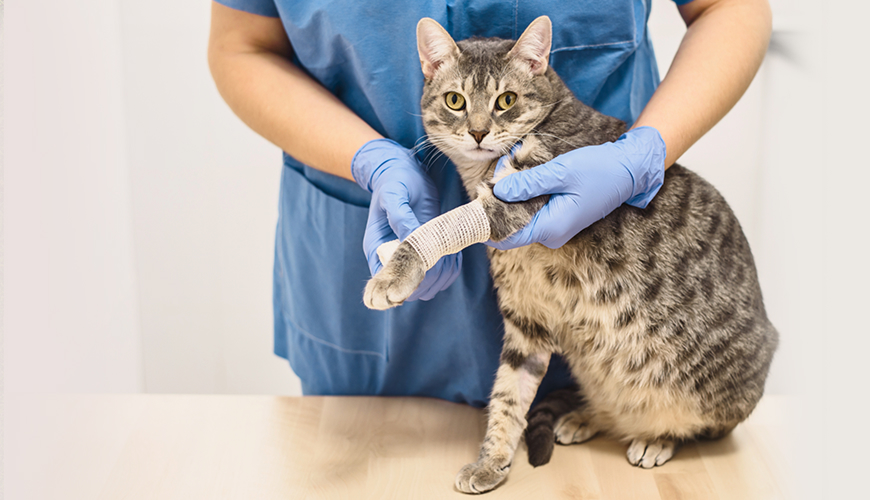Cats are agile, graceful, and usually careful by nature. However, even the most cautious indoor cats can suffer accidents that may lead to injuries, including broken bones. If you notice your cat limping, crying in pain, or refusing to move, it could be a sign of a fracture.
This comprehensive guide will walk you through how to identify a possible broken limb in your cat, what to do in the moment, the treatment process, and how to care for your cat during recovery.
How to Tell if Your Cat Has a Broken Limb
Not all injuries are immediately visible. It’s important to observe your cat closely for physical or behavioral signs that may indicate a fracture:
- Obvious limping or complete refusal to bear weight on a limb
- Swelling or inflammation at a specific spot
- Crying or vocalizing when the area is touched
- A visible deformity, such as an odd bend in the leg
- A sudden change in behavior – hiding, aggression, or lethargy
- Difficulty jumping or moving as usual
If one or more of these symptoms appear, you may be dealing with a bone fracture. The first and most crucial step is to remain calm.
First Aid: What to Do Immediately
- Stay Calm and Reassure Your Cat
Your cat is likely to be in pain and scared. Speak softly and approach them slowly to avoid causing further stress. - Limit Movement
Prevent your cat from walking, running, or jumping. Ideally, place them gently in a small, safe area like a padded box or pet carrier. - Do Not Attempt to Fix It Yourself
Do not try to straighten the limb, apply a splint, or move the injured area. Improper handling can worsen the fracture or cause more pain. - Take Your Cat to the Vet Immediately
The sooner your cat is examined, the better the chances for a successful recovery. Only a vet can properly assess the injury and start treatment.
Veterinary Diagnosis and Treatment Options
Once at the vet, your cat will undergo a physical exam and likely X-rays to determine the type and location of the fracture.
Common Types of Fractures in Cats:
- Simple (closed) fracture – the bone is broken but does not pierce the skin
- Open (compound) fracture – the bone breaks through the skin, often leading to infection
- Comminuted fracture – the bone is broken into multiple pieces
- Displaced fracture – the bone ends are misaligned
Treatment Methods Include:
- Splints or Casts
Used for stable and simple fractures, especially if they are below the elbow or knee. - Surgery (Internal Fixation)
In complex or displaced fractures, your cat may require pins, plates, or screws to realign the bone. - Medication
Your vet will likely prescribe painkillers, anti-inflammatories, and antibiotics if needed. - Strict Rest
Regardless of the treatment method, your cat will need to stay calm and still for several weeks.
Home Care During Recovery
Your role at home is crucial for your cat’s healing. Here’s how to create a recovery-friendly environment and routine:
- Create a Quiet and Safe Space
Set up a cozy corner in a quiet room or use a spacious crate to restrict movement. Include soft blankets and familiar items for comfort. - Follow the Vet’s Instructions Carefully
Administer all medications on schedule, and never stop them early, even if your cat seems better. - Monitor the Injury Site
If your cat had surgery or has a cast, check the area daily. Watch for swelling, foul smells, or discharge – these may signal infection. - Feed a Nutritious Diet
Support bone healing by feeding high-quality food rich in calcium, phosphorus, protein, and vitamins. Ask your vet for dietary recommendations. - Prevent Jumping and Running
Even if your cat appears to be healing, avoid letting them resume normal activity too soon. Set boundaries to keep them from leaping onto furniture or climbing. - Use a Litter Box with Low Sides
This makes it easier for your injured cat to access the box without strain.
Expected Healing Time and Follow-Up
Recovery time depends on the type and severity of the fracture, as well as your cat’s age and overall health. Generally, healing can take anywhere from 4 to 12 weeks.
During this period, your vet may schedule follow-up visits to:
- Re-evaluate healing progress
- Take follow-up X-rays
- Adjust medications or treatment as needed
In some cases, physiotherapy or gentle exercises may be recommended to rebuild muscle strength once the bone has healed.
Preventing Future Accidents
While accidents can’t always be avoided, you can reduce your cat’s risk of injury by taking a few precautions:
- Secure windows and balconies: Use protective screens or nets.
- Discourage access to high shelves or unstable surfaces.
- Supervise outdoor access: If your cat goes outside, make sure the environment is safe and enclosed.
- Provide safe play zones: Use cat trees and toys designed to keep your cat active but protected.
Supporting Your Cat Emotionally
An injured cat is not only physically weak but can also feel emotionally vulnerable. Be patient and gentle:
- Spend quiet time near your cat to comfort them.
- Talk in a calm voice and pet them if they seem receptive.
- Avoid punishing or scolding – your cat may be irritable or fearful due to pain.
Sometimes, post-injury anxiety or behavioral changes linger. If your cat continues to hide, avoids contact, or shows aggression after healing, consider a follow-up consultation or behavior therapy.
A broken limb is a serious but treatable condition in cats. With prompt veterinary care, attentive home management, and lots of love, most cats fully recover and return to their normal lives.
Remember: early action makes a difference. If you suspect your cat has a broken limb, don’t delay seeking veterinary attention. Your care, patience, and commitment during recovery will help your cat heal safely and feel loved throughout the process.

